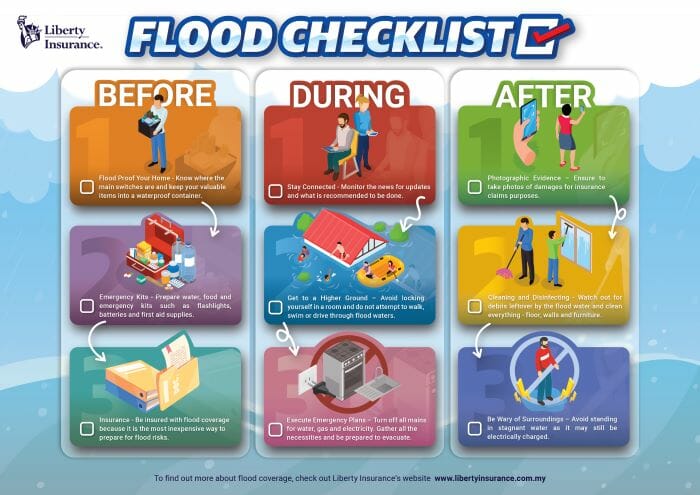Decoding Flood Alerts: A Practical Guide To Flood Safety

Table of Contents
Understanding Different Types of Flood Alerts
Effective flood preparedness starts with understanding the various flood alerts issued by different authorities. Knowing the meaning of each alert allows you to take timely and appropriate actions.
National Weather Service Alerts
The National Weather Service (NWS) uses a standardized system of alerts to communicate flood threats. These alerts generally fall into three categories:
- Flood Watch: Conditions are favorable for flooding. Be prepared to take action should flooding develop. This is a time to review your flood safety plan and ensure your emergency kit is ready.
- Flood Warning: Flooding is occurring or is imminent. Take immediate action to protect yourself and your property. This might involve evacuation, moving valuable items to higher ground, or taking other protective measures.
- Flood Advisory: Minor flooding is occurring or is imminent. Be aware of the potential for flooding and take precautions. This is a good time to monitor the situation closely and be prepared to act if conditions worsen.
Local Emergency Alerts
In addition to NWS alerts, your local authorities may issue their own flood alerts via sirens, text messages, mobile apps, or local news broadcasts. These alerts are often more specific to your area and may provide crucial, localized information. Registering for these alerts is vital. Many municipalities have websites or apps where you can sign up for emergency notifications.
- Definitions: Familiarize yourself with the specific terminology used by your local emergency management agency.
- Action Plans: Develop a detailed action plan for each alert level, including evacuation routes, shelter locations, and contact information for family members.
- Registration: Sign up for local emergency alerts through your city or county's website, or download a relevant emergency notification app.
Preparing for a Flood: Creating Your Flood Safety Plan
Proactive planning is key to mitigating flood risks. A well-defined flood safety plan ensures you're ready to act swiftly and efficiently when a flood alert is issued.
Building an Emergency Kit
A comprehensive emergency kit is essential for surviving a flood. Your kit should include:
- Water: At least one gallon per person per day for several days.
- Food: Non-perishable items that are easy to prepare and store.
- First-aid kit: Including any necessary medications.
- Important documents: Copies of insurance policies, identification, and medical records, ideally stored in a waterproof container.
- Flashlight and extra batteries: For navigating in the dark.
- Radio: A battery-powered radio to receive emergency broadcasts.
Developing an Evacuation Plan
Identify multiple evacuation routes from your home, considering potential road closures. Know the location of designated shelters and establish a meeting point for family members in case of separation. Always have a backup plan.
- Route Mapping: Mark evacuation routes on a map and familiarize yourself with alternate routes.
- Shelter Locations: Locate nearby shelters and understand their capacity and accessibility.
- Family Communication: Establish a method for contacting family members during and after a flood.
Protecting Your Property
Taking preventative measures can significantly reduce flood damage to your property. Consider:
- Elevating electrical appliances and valuable possessions.
- Installing flood barriers or sandbags around your home.
- Moving valuable items to higher levels of your home.
- Reinforcing your home's foundation.
Responding to a Flood Warning: Safety During and After a Flood
When a flood warning is issued, immediate action is crucial.
Evacuation Procedures
If instructed to evacuate, do so immediately. Follow the instructions given by emergency services and local officials.
- Safe Evacuation: Use designated evacuation routes and avoid flooded areas.
- Pet Evacuation: Make arrangements for your pets well in advance of a potential flood.
- Transportation: Ensure you have a reliable mode of transportation to your evacuation destination.
Staying Safe During a Flood
If evacuation is not possible, move to the highest level of your home. Stay away from windows and doors, and avoid contact with floodwaters.
- Upper Floors: Seek shelter on the upper floors of your home.
- Floodwater Dangers: Be aware of the dangers of contaminated floodwaters.
- Electrical Hazards: Avoid contact with electrical wires and appliances.
Post-Flood Safety
After the floodwaters recede, proceed with caution.
- Floodwater Contamination: Avoid contact with floodwaters as they may be contaminated with sewage and hazardous materials.
- Structural Damage: Check for structural damage to your home before re-entering.
- Damage Reporting: Report any damage to your home or property to your insurance company and local authorities. Contact FEMA or the Red Cross for assistance.
Utilizing Technology for Flood Alerts and Safety
Technology plays a crucial role in both receiving flood alerts and staying safe.
Weather Apps and Websites
Utilize reliable weather apps (e.g., AccuWeather, The Weather Channel) and websites (e.g., NOAA, NWS) to monitor weather forecasts and receive real-time flood alerts.
Emergency Alert Systems
Enable Wireless Emergency Alerts (WEA) on your smartphone to receive urgent warnings, including flood alerts, directly from your carrier. Sign up for alerts from the National Oceanic and Atmospheric Administration (NOAA).
Social Media and Community Resources
Follow local emergency services and community groups on social media for up-to-date information and assistance during and after a flood.
- Reputable Sources: Verify information from official sources to avoid misinformation.
- Community Support: Connect with your community for mutual aid and support.
Conclusion
Understanding flood alerts, preparing a comprehensive flood safety plan, and responding effectively are crucial for safeguarding your life and property during and after a flood. Remember to create your emergency kit, establish an evacuation plan, and familiarize yourself with local warning systems. Stay informed about weather forecasts and heed all official flood alerts. Don't wait for a flood alert; prepare your family and home for flood safety now! By taking proactive steps, you can significantly reduce your vulnerability and build resilience against the devastating impacts of floods.

Featured Posts
-
 Martin Compston And The Unexpected Los Angeles Feel Of His Glasgow Set Thriller
May 26, 2025
Martin Compston And The Unexpected Los Angeles Feel Of His Glasgow Set Thriller
May 26, 2025 -
 Mercedes Investigation Latest On Lewis Hamiltons F1 Future
May 26, 2025
Mercedes Investigation Latest On Lewis Hamiltons F1 Future
May 26, 2025 -
 Mans Lawn Becomes Unexpected Docking Station Cnn Reports On Runaway Container Ship
May 26, 2025
Mans Lawn Becomes Unexpected Docking Station Cnn Reports On Runaway Container Ship
May 26, 2025 -
 High Stakes Finance Uncovering Corruption In Monacos Royal Circle
May 26, 2025
High Stakes Finance Uncovering Corruption In Monacos Royal Circle
May 26, 2025 -
 55 Richna Naomi Kempbell Evolyutsiya Stilyu Ta Foto Z Podiumiv
May 26, 2025
55 Richna Naomi Kempbell Evolyutsiya Stilyu Ta Foto Z Podiumiv
May 26, 2025
Latest Posts
-
 Tyrese Haliburton Picks Pacers Vs Knicks Game 1 Predictions And Best Bets
May 28, 2025
Tyrese Haliburton Picks Pacers Vs Knicks Game 1 Predictions And Best Bets
May 28, 2025 -
 Pacers Vs Knicks Game 3 Betting Preview Featuring Tyrese Haliburton
May 28, 2025
Pacers Vs Knicks Game 3 Betting Preview Featuring Tyrese Haliburton
May 28, 2025 -
 Tyrese Haliburton Performance Key To Pacers Game 3 Victory Against Knicks
May 28, 2025
Tyrese Haliburton Performance Key To Pacers Game 3 Victory Against Knicks
May 28, 2025 -
 Knicks Vs Pacers Game 3 Tyrese Haliburton Prop Bets And Analysis
May 28, 2025
Knicks Vs Pacers Game 3 Tyrese Haliburton Prop Bets And Analysis
May 28, 2025 -
 Haliburtons Impact Game 3 Knicks Vs Pacers Predictions And Betting Picks
May 28, 2025
Haliburtons Impact Game 3 Knicks Vs Pacers Predictions And Betting Picks
May 28, 2025
